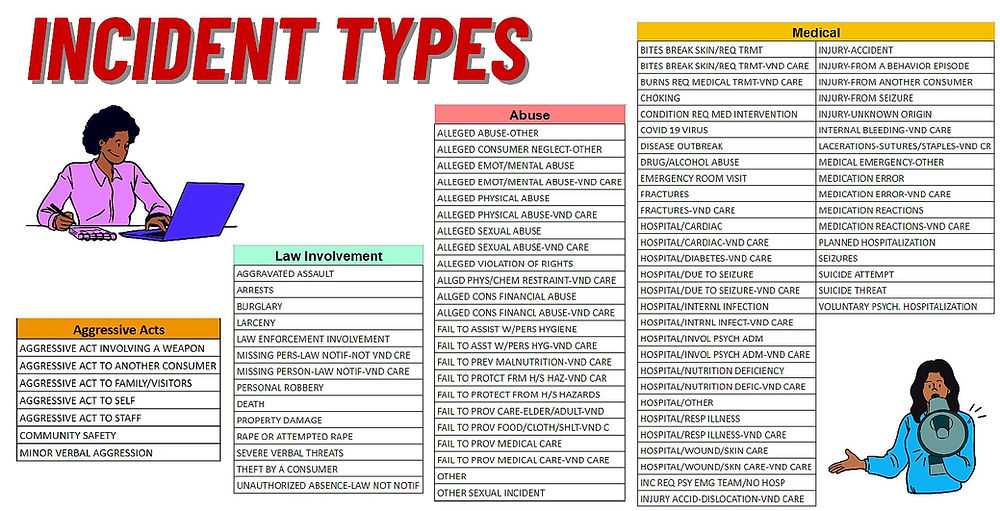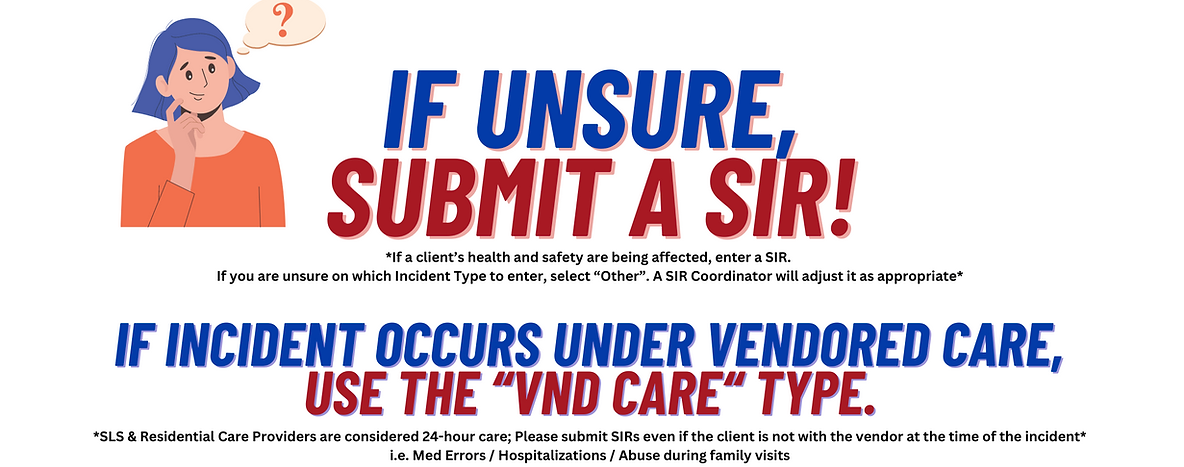Special Incident Reporting
Who Should Report
Per DDS, any vendor or long-term care facility staff should report special incidents as required by Title 17, Section 54327 of the California Code of Regulations.
Why do we report SIRs?
SIRs outline a timeline of incidents that affect a client's health and safety. By examining SIR histories, Special Incident Reporting Coordinators (SIRCs) can identify trends or patterns of behaviors that allow SDRC to provide better trauma-informed care and risk mitigation plans.
Why do SIRs matter?
By reporting in a timely manner, clients can be connected to resources faster, investigations by appropriate agencies can begin sooner, and we can remove perpetrators from harming other clients thus preventing future SIRs.
Phone Reports (24 hours notice)
SDRC service providers and long-term care facilities should report special incidents to a client’s service coordinator or an on-call service coordinator via phone call/voice message within 24 hours of incident occurrence.
Written Reports (48 hours notice)
Submit a written report of the special incident to the regional center within 48 hours of special incident occurrence.
The Special Incident Form is to be used by SDRC service providers as well as long-term care facilities. Please use this form when submitting SIRs to SDRC and Community Care Licensing.
Written reports can be submitted via Email and Online SIR Vendor Portal (also known as Service Provider Portal). SDRC will accept faxed SIRs, however, we highly encourage written SIRs be submitted via Email or the Portal to ensure the assigned service coordinator is notified.
Report via Email
Written reports can now be sent to our email vendorsirs@sdrc.org.
Please do not send written SIRs to your service coordinator's personal email.
Report via Online SIR Vendor Portal
After a vendor has been given access, they can begin using the Online SIR Vendor Portal to report Special Incidents.
To begin using the Online SIR Vendor Portal:
1. Download the SPP Agreement Form
2. Complete and email this form to your assigned SDRC Resource Coordinator.
Guides & Tutorials
Need to update a SIR?
If a Vendor needs to update an existing SIR, please notify your SC with the new information and the SC will relay it to the SIR Coordinators. This way SCs can be aware of any changes to a client's status.

SDRC is requiring that ALL Hospitalizations, ER visits, and reports of Abuse/Neglect are documented via a SIR.
Doing so assists SDRC in analyzing trends and identifying opportunities for improved care.*

Trainings
Upcoming Vendor Trainings
September 11, 2025 & December 10, 2025
10:00 am - 11:30 am
All trainings will be conducted via Zoom.
Registration is required for each individual session. CLICK HERE TO REGISTER.
Need SIR Training?
Email: sirs@sdrc.org



